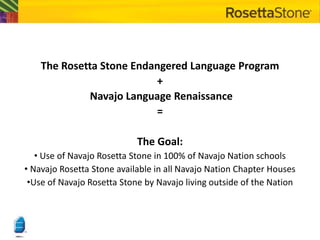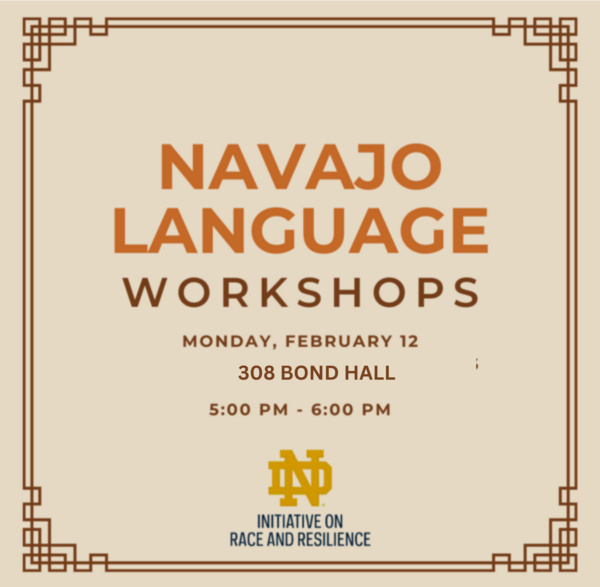
A Call to Action: How to Support Navajo Language Revitalization
The Navajo language, known to its speakers as Diné Bizaad, is far more than a system of communication; it is the heartbeat of a nation, the repository of centuries of wisdom, history, and identity. While estimates vary, over 150,000 individuals still speak Diné Bizaad, making it the most vibrant Indigenous language north of Mexico. Yet, even with its relative strength, the language faces an existential threat. A stark decline in fluency among younger generations, coupled with historical pressures of assimilation, means that without concerted, multi-faceted efforts, the unique worldview embedded within Diné Bizaad could fade. Supporting its revitalization is not merely an academic exercise; it is an imperative for cultural survival, a testament to resilience, and an investment in the rich tapestry of human heritage.
The challenge is immense, but so is the dedication of the Navajo people and their allies. True revitalization requires a holistic approach, addressing education, technology, community engagement, policy, and economic sustainability.
Fostering Fluency Through Immersive Education
At the core of any successful language revitalization effort lies robust educational programming, particularly immersion. For Diné Bizaad, this means establishing and strengthening schools where the Navajo language is the primary medium of instruction from an early age.
"Immersion education isn’t just about learning words; it’s about thinking in Navajo, dreaming in Navajo, and living in Navajo," explains Dr. Jennifer Nez Denetdale, a professor of American Studies at the University of New Mexico and a Navajo Nation citizen. "When children are fully immersed, the language becomes an integral part of their being, not just a subject they study."

- Early Childhood Immersion: The most effective interventions begin in preschool and kindergarten. Programs like those offered by the Navajo Nation’s Head Start initiative, or independent Diné language nests, provide a critical foundation. These environments are designed to replicate the natural language acquisition process, surrounding young learners with fluent speakers who communicate exclusively in Diné Bizaad.
- Dual-Language and Full Immersion Schools: Beyond early childhood, supporting existing dual-language schools and advocating for the creation of more full immersion K-12 institutions is crucial. Schools like the acclaimed Navajo Preparatory School in Farmington, New Mexico, while not a full immersion school, integrates Diné culture and language throughout its curriculum, demonstrating a commitment to nurturing Navajo identity alongside academic excellence. Funding for such schools, curriculum development in Diné Bizaad, and the creation of culturally relevant teaching materials are paramount.
- Teacher Training and Recruitment: A critical bottleneck is the shortage of fluent Diné Bizaad teachers qualified to teach in immersion settings. Investment in robust teacher training programs, scholarships for Navajo speakers to pursue education degrees, and competitive salaries are essential to attract and retain these vital cultural carriers. Programs that train fluent elders to become certified teachers, bridging the generational gap in language transmission, offer a powerful solution.
Leveraging Technology and Media for Modern Learners
In an increasingly digital world, technology and media offer unprecedented opportunities to make Diné Bizaad accessible, engaging, and relevant, especially for younger generations.
"Our youth are digital natives. We have to meet them where they are," states Myron Lizer, former Vice President of the Navajo Nation. "That means creating vibrant, interactive content in Diné Bizaad across all platforms."
- Language Learning Apps and Online Resources: Developing high-quality, user-friendly apps, interactive websites, and digital dictionaries specifically for Diné Bizaad can significantly expand access to learners of all ages. Projects like the Navajo Language Academy’s online dictionary or independent efforts to create mobile learning games provide invaluable tools for self-study and supplementary learning.
- Social Media Content Creation: Encouraging and supporting Navajo youth to create content (TikToks, Instagram reels, YouTube videos) in Diné Bizaad is a powerful way to normalize the language and make it cool. These platforms offer avenues for organic language use, cultural expression, and community building among young speakers.
- Diné Bizaad in Traditional and New Media: Supporting Navajo radio stations, television programs, and podcasts that broadcast in Diné Bizaad ensures the language is heard daily in homes and cars. Furthermore, funding for independent filmmakers and content creators to produce movies, documentaries, and animated series in Diné Bizaad can captivate audiences and create new avenues for language exposure. The recent success of the Star Wars: A New Hope dub in Diné Bizaad showcased the language’s capacity for modern storytelling and its appeal to a broad audience.
- Digital Archiving and Documentation: Investing in digital archives of oral histories, traditional stories, and cultural practices in Diné Bizaad ensures that the linguistic and cultural knowledge of elders is preserved for future generations, even as the number of fluent first-language speakers declines.

Empowering Families and Communities
While institutional support is vital, the home and community remain the primary environments for organic language transmission. Revitalization efforts must empower families and create community spaces where Diné Bizaad thrives.
"The home is the first school, and parents are the first teachers," says Elsie Mae Begay, a respected Diné elder and language advocate. "If our children don’t hear our language at home, it’s a constant struggle for them to learn it anywhere else."
- Parent and Family Language Programs: Offering classes and workshops for parents and caregivers to learn or relearn Diné Bizaad can create a language-rich home environment. These programs can also provide resources and strategies for integrating the language into daily routines, storytelling, and cultural practices.
- Intergenerational Mentorship: Establishing formal and informal mentorship programs that connect fluent elders with younger learners is incredibly effective. This not only transmits linguistic knowledge but also fosters cultural understanding and strengthens community bonds.
- Community Language Nests and Circles: Creating community-based spaces where Diné Bizaad is exclusively spoken – be it through weekly language circles, storytelling sessions, or cultural events – can normalize its use outside of formal education. These environments provide a safe and supportive space for learners to practice and for fluent speakers to connect.
- Cultural Celebrations and Ceremonies: Encouraging the use of Diné Bizaad in traditional ceremonies, powwows, and cultural gatherings reinforces its sacred and communal significance. These events serve as powerful reminders of the language’s integral role in Navajo identity and spiritual life.
Advocating for Policy and Funding
Sustainable language revitalization requires strong political will and consistent financial investment from tribal, state, and federal governments, as well as non-profit organizations.
"Our language isn’t just a cultural asset; it’s a sovereign right," asserts a Navajo Nation council member. "We need policies that protect and promote Diné Bizaad as an official language, backed by adequate funding."
- Tribal Government Legislation and Funding: The Navajo Nation government has a critical role in enacting legislation that recognizes Diné Bizaad as an official language, mandates its use in governmental affairs where possible, and allocates significant funds for language education and cultural programs. The Navajo Nation’s Office of Diné Youth, for example, plays a role in fostering cultural identity.
- Federal and State Support: Advocating for increased federal funding for Native American language programs (e.g., through the Native American Languages Act) and encouraging state governments to support Indigenous language education within public school systems are vital. This includes funding for curriculum development, teacher salaries, and immersion programs.
- Non-Profit Partnerships: Non-profit organizations specializing in Indigenous language revitalization can provide crucial support through grants, technical assistance, and advocacy. Building strong partnerships between the Navajo Nation, educational institutions, and these organizations can amplify efforts and leverage resources.
- Public Awareness and Allyship: Educating the broader public about the importance of Indigenous language revitalization and countering misconceptions can foster greater understanding and support for these initiatives. Non-Navajo allies can play a significant role by advocating for policy changes, donating to language programs, and respecting the cultural significance of Diné Bizaad.
Building Economic and Sustainable Models
Ultimately, for Diné Bizaad to thrive, it must be integrated into the economic and professional lives of the Navajo people, creating opportunities for fluent speakers.
"If we want our youth to speak Navajo, there need to be jobs for them in Navajo," suggests a young Navajo entrepreneur. "Creating economic value around our language makes it sustainable."
- Job Creation in Language-Related Fields: Developing careers for fluent Diné Bizaad speakers as teachers, translators, interpreters, media producers, cultural guides, and linguists provides tangible incentives for language mastery.
- Cultural Tourism and Entrepreneurship: Promoting authentic cultural tourism experiences that feature Diné Bizaad and supporting Navajo entrepreneurs who incorporate the language into their businesses (e.g., selling books, art, or crafts with Navajo language elements) can create economic value.
- Language Services: Encouraging businesses and governmental agencies operating within the Navajo Nation to offer services in Diné Bizaad and hire fluent speakers can further integrate the language into daily life and the economy.
Conclusion: A Resilient Future
Supporting Navajo language revitalization is a multifaceted endeavor, requiring sustained effort, collaboration, and resources across all sectors. From immersive education in early childhood to sophisticated digital platforms, from family language planning to robust governmental policies, every layer of support contributes to the resilience of Diné Bizaad. The story of the Navajo Code Talkers during World War II stands as a powerful testament to the unique value and strategic importance of this language, a value that transcends mere communication.
The future of Diné Bizaad rests on the collective will to ensure its vibrant continuation. It is an investment in human diversity, a commitment to cultural self-determination, and a recognition that a language carries not just words, but the very soul of a people. By embracing these strategies, we can help ensure that the ancient echoes of Diné Bizaad continue to resonate, strong and clear, for generations to come.


